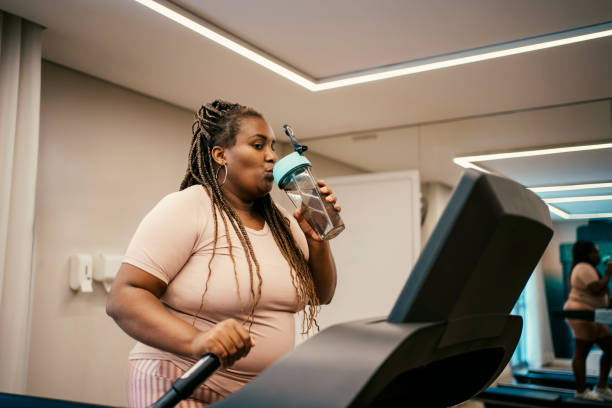(BlackFitness101.com) When it comes to fitness, one of the most frequently asked questions is, “How many times a week should I exercise?” The answer to this question varies depending on individual goals, fitness levels, and even lifestyle factors. As a fitness trainer, I understand that not everyone’s journey is the same, and the number of times you should hit the gym, lace up your running shoes, or unroll your yoga mat is highly personal. However, I can offer some general guidelines to help you determine the ideal workout frequency based on your goals and the benefits of regular exercise.
In this article, I’ll break down the importance of exercise, the different types of fitness routines, and how often you should engage in physical activity to achieve your health and fitness goals.

Why Is Exercise Important?
Before diving into the specifics of workout frequency, it’s essential to understand why exercise is so crucial for your overall well-being. Engaging in regular physical activity has far-reaching benefits that go beyond just weight management or building muscle. Here are a few reasons why exercise should be a staple in your weekly routine:
- Improves Cardiovascular Health: Regular aerobic exercise strengthens the heart and lungs, improving circulation, reducing blood pressure, and lowering the risk of cardiovascular diseases.
- Boosts Mental Health: Exercise has been shown to release endorphins, which help reduce stress, anxiety, and symptoms of depression. It also boosts mood and mental clarity.
- Aids in Weight Management: Consistent exercise, when paired with a healthy diet, can help you lose weight or maintain a healthy weight by burning calories and building muscle.
- Enhances Strength and Flexibility: Resistance training and stretching improve muscle tone, endurance, and flexibility, which is essential for mobility and reducing the risk of injury.
- Supports Longevity: Research shows that regular exercise is associated with a longer, healthier life. It can prevent chronic diseases such as type 2 diabetes, cancer, and osteoporosis.
- Improves Sleep Quality: Regular physical activity helps regulate sleep patterns, allowing you to fall asleep faster and enjoy deeper, more restful sleep.
- Boosts Immune System: Exercise can enhance your body’s defense mechanisms, making you less susceptible to illnesses like colds and the flu.
Now that we’ve established why exercise is important, let’s explore how often you should work out each week based on your individual goals.
How Many Times a Week Should I Exercise?
1. General Health and Well-being
If your primary goal is to maintain good health, prevent chronic diseases, and improve your overall well-being, the American Heart Association (AHA) recommends at least 150 minutes of moderate-intensity exercise per week. This can be broken down into:
- 5 days a week of moderate-intensity activity for 30 minutes each session, such as brisk walking, cycling, or swimming.
Alternatively, you can aim for 75 minutes of vigorous exercise per week, such as jogging, running, or playing high-intensity sports. This can be split into:
- 3 days a week of vigorous activity for 25 minutes each session.
For general health, it’s also advisable to include muscle-strengthening exercises at least two days a week. These exercises can involve resistance training, weight lifting, or bodyweight exercises like push-ups and squats.
2. Weight Loss
If weight loss is your goal, you’ll need to increase the frequency and intensity of your workouts. Achieving a calorie deficit—burning more calories than you consume—is key to shedding pounds, and regular exercise can help you reach that goal.
For effective weight loss, it’s recommended that you aim for 250-300 minutes of moderate to vigorous exercise per week. This breaks down to:
- 5 to 6 days a week of moderate to high-intensity aerobic exercise.
- Each session should last between 45 to 60 minutes.
In addition to cardio, strength training should be incorporated at least 2 to 3 times a week. Building muscle not only helps tone your body but also increases your metabolic rate, meaning you’ll burn more calories even at rest. Focus on compound exercises such as deadlifts, bench presses, and rows that target multiple muscle groups simultaneously for maximum calorie burn.
3. Building Muscle and Strength
For those looking to gain muscle mass and increase strength, the focus should be on resistance training. The American College of Sports Medicine (ACSM) suggests that beginners aim for 2 to 3 strength-training sessions per week, while more experienced lifters can increase this to 4 to 5 sessions. Here’s a breakdown:
- 2 to 3 days a week for beginners: Focus on full-body workouts, performing compound movements like squats, deadlifts, and bench presses. Each session should last 45 to 60 minutes, allowing adequate time for rest between sets and exercises.
- 4 to 5 days a week for intermediates/advanced: More experienced lifters can break their routine into split workouts, targeting different muscle groups on different days. For example:
- Day 1: Chest and triceps
- Day 2: Back and biceps
- Day 3: Legs
- Day 4: Shoulders and core
Strength training should be combined with proper nutrition, particularly adequate protein intake, to optimize muscle growth. It’s also essential to allow your muscles time to recover by incorporating rest days into your routine. Muscles grow and repair during rest, so training the same muscle groups on consecutive days should be avoided.
4. Improving Endurance
If you’re training for a race or looking to increase your stamina, you’ll need to incorporate regular endurance-focused workouts. For endurance athletes, such as long-distance runners, swimmers, or cyclists, it’s essential to engage in cardiovascular exercise at least 4 to 6 days per week.
Your sessions should include a mix of:
- Long, steady-state cardio sessions to build endurance (e.g., long runs or bike rides at a moderate pace).
- Interval training to improve speed and stamina (e.g., sprint intervals during a run).
- Cross-training to prevent injury and work different muscle groups (e.g., swimming or cycling in addition to running).
Additionally, it’s crucial to incorporate strength training at least 2 days a week to build the muscle strength needed for endurance activities.
5. Flexibility and Balance
If your primary focus is flexibility, mobility, and balance—often the case for older adults or those recovering from injuries—your routine should prioritize stretching and low-impact exercises like yoga, Pilates, or Tai Chi.
You can practice these activities 3 to 5 days a week for 30 to 60 minutes per session. Yoga, in particular, is excellent for improving flexibility and balance while also building strength and promoting relaxation.
For those dealing with joint issues or recovering from an injury, exercises like swimming or cycling are great low-impact options that still provide cardiovascular benefits without placing undue strain on your body.
6. Athletic Performance and Sport-Specific Training
If you’re an athlete or training for a specific sport, the frequency and intensity of your workouts will depend on your sport’s demands. For instance, a basketball player will have a different training regimen than a soccer player or a powerlifter.
In general, athletes should aim to train 5 to 6 days per week, incorporating a mix of:
- Sport-specific drills and skills (e.g., ball handling, shooting, or sprinting for basketball).
- Strength and conditioning to build power, speed, and endurance.
- Flexibility and recovery work, including stretching, mobility exercises, and foam rolling.
It’s also important for athletes to periodize their training, meaning they should plan their workouts around their competition season, allowing for phases of high-intensity training followed by recovery periods.
How to Build a Weekly Workout Routine
Now that we’ve established how many times a week you should exercise based on your goals, let’s discuss how to structure your weekly workout routine. Here are some tips to help you create an effective schedule:
- Mix It Up: Variety is key when it comes to staying motivated and preventing burnout. Incorporate a mix of cardiovascular exercise, strength training, and flexibility work into your routine. This will also help prevent overuse injuries by allowing different muscle groups to recover between workouts.
- Prioritize Rest and Recovery: While exercise is essential, rest and recovery are just as important. Overtraining can lead to injuries, burnout, and decreased performance. Be sure to schedule at least 1 to 2 rest days per week, and listen to your body. If you feel fatigued or sore, give yourself an extra day of rest to avoid overexertion.
- Progress Gradually: If you’re just starting, ease into your workout routine. You don’t need to go from zero to six days a week right away. Start with 3 to 4 days of exercise and gradually increase the frequency and intensity as your fitness improves.
- Set Specific Goals: Establish clear, realistic goals to guide your workout plan. Whether you’re aiming to lose weight, build muscle, or improve endurance, having specific goals will help you stay on track and tailor your workouts accordingly.
- Stay Consistent: Consistency is key to seeing results. Whether you’re working out three days a week or six, sticking to your routine and making exercise a habit is more important than how many times you work out each week.
Common Workout Frequencies for Different Fitness Levels
Let’s break down workout frequencies for various fitness levels:
- Beginner (0 to 6 months of consistent training):
- Frequency: 3-4 days per week
- Focus: Full-body workouts or alternating upper/lower body days
- Time per session: 30-45 minutes
- Goal: Building a foundation of strength and cardiovascular fitness
- Intermediate (6 months to 2 years of consistent training):
- Frequency: 4-5 days per week
- Focus: Split routines (e.g., upper/lower body splits, push/pull days)
- Time per session: 45-60 minutes
- Goal: Increase strength, endurance, and muscle size
- Advanced (2+ years of consistent training):
- Frequency: 5-6 days per week
- Focus: Specialized split routines and sport-specific training
- Time per session: 60-90 minutes
- Goal: Optimize athletic performance, peak physical condition
The number of times you should exercise each week ultimately depends on your individual fitness goals, current fitness level, and lifestyle. Whether you aim to improve general health, lose weight, build muscle, or enhance athletic performance, consistency and balance are key to any fitness routine.
If you’re unsure how to start or structure your workouts, consider consulting with a fitness professional who can design a personalized program based on your needs. By staying consistent, listening to your body, and progressing gradually, you’ll be well on your way to achieving your fitness goals and living a healthier, more active life.
Staff Writer; Janet Banks
Questions? Feel free to email me at; JBanks@BlackFitness101.com.












Leave a Reply